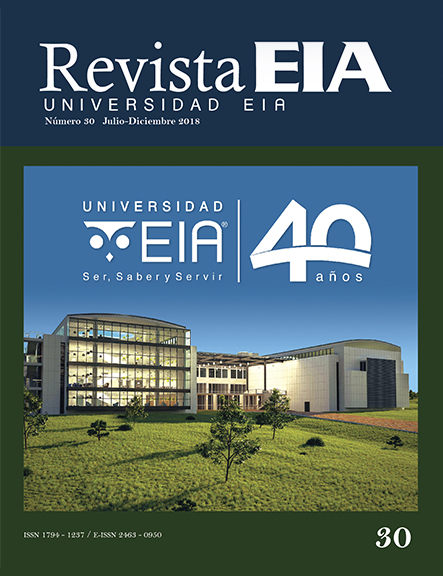Identificación de Instrumentos Musicales de Cuerdas Pulsadas de la Región Andina Colombiana en Solo, Mediante Técnicas de Aprendizaje de Máquina
Identificación de Instrumentos Musicales de Cuerdas Pulsadas de la Región Andina Colombiana en Solo, Mediante Técnicas de Aprendizaje de Máquina

Copyright statement
The authors exclusively assign to the Universidad EIA, with the power to assign to third parties, all the exploitation rights that derive from the works that are accepted for publication in the Revista EIA, as well as in any product derived from it and, in in particular, those of reproduction, distribution, public communication (including interactive making available) and transformation (including adaptation, modification and, where appropriate, translation), for all types of exploitation (by way of example and not limitation : in paper, electronic, online, computer or audiovisual format, as well as in any other format, even for promotional or advertising purposes and / or for the production of derivative products), for a worldwide territorial scope and for the entire duration of the rights provided for in the current published text of the Intellectual Property Law. This assignment will be made by the authors without the right to any type of remuneration or compensation.
Consequently, the author may not publish or disseminate the works that are selected for publication in the Revista EIA, neither totally nor partially, nor authorize their publication to third parties, without the prior express authorization, requested and granted in writing, from the Univeridad EIA.
Show authors biography
Son muchos los estudios propuestos sobre la identificación de instrumentos musicales, pero ninguno ha estado enfocado en instrumentos de cuerda pulsada de la región andina colombiana como lo son: tiple, tiple requinto, guitarra y bandola. Por ello, se propone la identificación de estos utilizando técnicas de aprendizaje de máquina tales como Análisis discriminante, Árbol de Decisión, kNN, SVM, ANNs y utilizando tres métodos de reducción de datos: Feature Selection; PCA con 1, 100 y 1000 componentes principales; y extrayendo las cinco primeras frecuencias parciales junto a sus amplitudes normalizadas. Esta investigación se realizó usando una base de datos de 1000 grabaciones de audio monofónicas, construida a partir del registro de las notas de la primera posición de cada instrumento en formato WAV. Se utilizó como Método de Validación Cruzada con un k igual a cinco para realizar las Matrices de Confusión y Curvas ROC. La mejor Exactitud se alcanzó con ANNs que tuvo un porcentaje de 99,8% en la identificación, además las curvas ROC mostraron un área bajo la curva muy cercana a uno para la guitarra.
Article visits 532 | PDF visits 507




